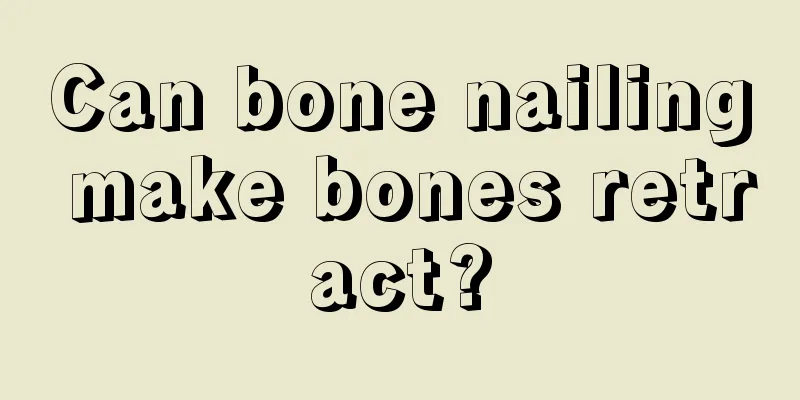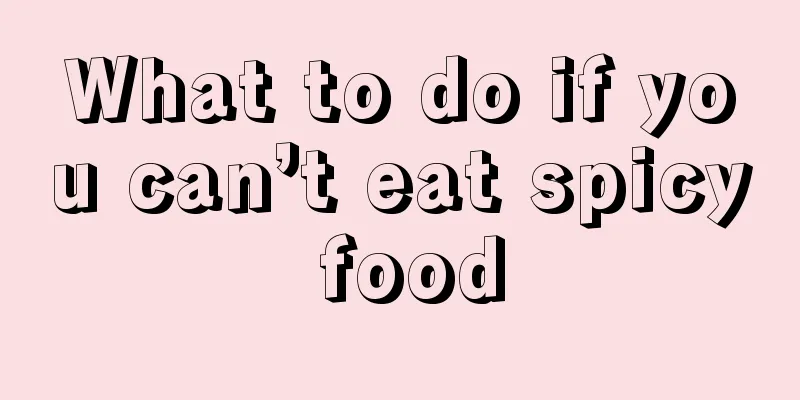Can bone nailing make bones retract?

|
Bone screw insertion is a procedure that dentists perform when correcting patients' teeth. Many patients do not understand bone screws and want to know if bone screw insertion can make the bones retract? First of all, everyone should understand the purpose of bone screw insertion. Bone screw insertion is to better correct teeth, restore the teeth to their normal arrangement order, and increase the correction effect. Bone screws will not be directly absorbed and will be removed after the teeth are corrected and fixed. 1. The purpose of bone screws in orthodontic treatment: 1. Replace the head cap 2. As a fixture for moving teeth 3. Increase the speed of tooth movement 4. Improve the gingival smile (i.e. too much gums showing when smiling) 5. Improve the effect of orthodontic treatment. 2. Steps of orthodontic bone screwing 1. Bone screw implantation should be started before aligning the teeth and preparing to retract or lower the teeth; 2. Before implanting the bone screw, at least a dental X-ray should be taken at the planned implantation site based on a panoramic X-ray to determine the position of the bone screw to prevent it from being directly screwed onto the tooth root; the requirement is that the bone screw must be at least 1 mm away from other tissues, and the maxillary posterior tooth area should be within 7 mm of the top of the alveolar ridge. The distance between the second premolar and the first molar is 7 mm from the top of the alveolar ridge, where the root distance is the largest and the buccal-palatal diameter is also the thickest, but it cannot reach 7 mm, let alone exceed 7 mm. It is not suitable to implant bone screws between the maxillary first and second molars due to the small amount of bone and the posterior position; and it is also not suitable to implant bone screws in the maxillary posterior teeth area 7 mm or more away from the top of the alveolar ridge due to the possible maxillary sinus. The most suitable area is between the second premolar and the first molar, 5 to 7 mm from the top of the alveolar ridge. The diameter and length of the bone screw to be implanted are carefully selected based on the patient's bone mass. 3. Pack the selected bone screws, implant instruments, and small steel ruler, sterilize them, and keep them ready for use; 4. After the follow-up visit, the patient will undergo full mouth cleaning and washing with iodine and hydrogen peroxide, followed by local anesthesia. After local anesthesia, use iodine cotton balls to disinfect the teeth in the upper and lower quadrants on the same side of the surgical area, as well as the skin around the mouth. 5. Open the disposable treatment tray, open the packaged bone screw implantation package, put it into the disposable treatment tray, then wear sterile gloves, use a steel ruler to determine the intended implantation site, pierce with a probe to mark it, and use a cotton ball to stop bleeding; 6. Install the bone screw, insert it from the marked point to the bone surface, and then screw it in clockwise in the direction consistent with the tooth gap. When screwing it in, pull the corner of the mouth with one hand and screw it in with the other hand. Pay attention to the direction of screwing in, otherwise if you screw it in the wrong direction and screw it onto the tooth root, it will cause the implant to fail. If the direction is found to be wrong during screwing, it should be reversed, taken out and screwed again. Do not bend the bone screw, otherwise it will break. When taking a dental X-ray after screwing, the angle of projection should be facing the bone screw, so that the relationship between the bone screw and the surrounding tissue can be correctly observed. 7. Stop screwing in when the screwing platform reaches the gums, apply iodine glycerin on the surface, and advise the patient not to rinse his mouth or eat within two hours; give the patient a bottle of mouthwash to rinse for one week. 8. Force can be added to the bone screws only after two weeks. The force applied to each bone screw should not exceed 200 grams. Otherwise, the bone screw may come out. |
<<: Ankle fracture nail removal surgery
>>: How to treat large gaps between teeth_What to do if there are large gaps between teeth
Recommend
The five spots on your body determine your life span
Nowadays, many people pay attention to health pre...
What are the nursing methods for lung cancer? Five nursing measures should be taken after diagnosis of lung cancer
Lung cancer is a disease that is very harmful to ...
Why does my chest hurt when I smoke?
We often see advertisements saying that smoking i...
I can't sleep with my boyfriend
Many people have been single for too long and are...
Symptoms of headache caused by cervical spine
In today's society, cervical spondylosis is a...
Which material is best for household frying pans
We use woks very often in our lives. Basically, w...
What is the best way to treat liver cancer? These 3 methods can be used to treat liver cancer
As we all know, in my country, liver cancer is th...
How to solve the problem of being oppressed by ghosts while sleeping
Most people have a fearful attitude toward ghosts...
The advantages and disadvantages of lunch break
I believe that many people have the habit of taki...
What is the principle of cold light teeth whitening?
Many people don’t know about cold light teeth whi...
What causes women to suffer from tongue cancer
If you have oral ulcers, you must pay attention t...
What are the benefits of washing your face with cold water
In summer, we all like to drink some cool drinks....
What are the symptoms of lung tumors
Lung tumors are the most common respiratory tumor...
Nosebleed may be an early symptom of cancer
Since the liver is the largest solid organ in the...
What does a routine blood test check?
During regular physical examinations, a routine b...









